Pond Cleaning & Maintenance Service Milton Keynes
If your pond is looking a little murky, our team of experts can help.
speak with an expert today
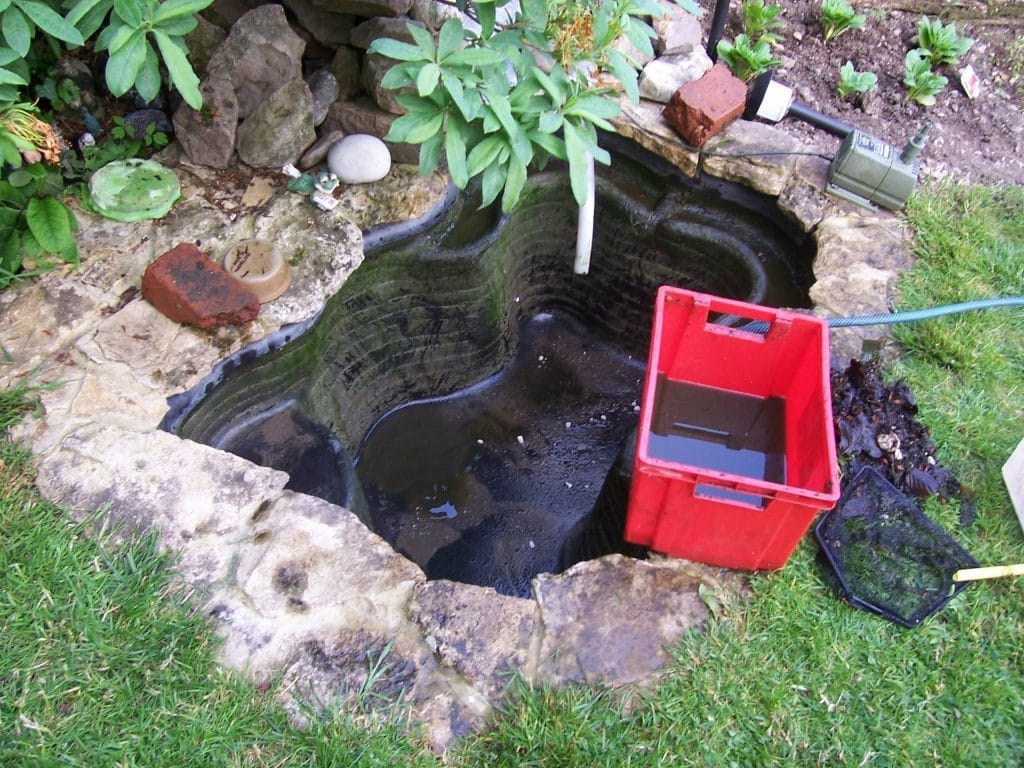
Why pond maintenance is essential
Introduction to Pond Maintenance
Pond maintenance is a crucial aspect of keeping a healthy and thriving garden pond. Regular maintenance ensures that the pond water remains clean and clear, and the aquatic life within it remains healthy and balanced. A well-maintained pond also enhances the aesthetic appeal of the surrounding garden, creating a serene and peaceful environment. By dedicating time to pond maintenance, you can enjoy a beautiful and vibrant pond that serves as a focal point in your garden.
Importance of Regular Pond Maintenance
Regular pond maintenance is essential to prevent the buildup of debris, algae, and bacteria that can harm the aquatic life and compromise the overall health of the pond. Neglecting pond maintenance can lead to a range of problems, including cloudy or green water, excessive algae growth, and the death of fish and other aquatic life. By performing regular maintenance tasks, pond owners can prevent these problems and ensure that their pond remains a beautiful and thriving ecosystem. Consistent care helps maintain a balanced environment, promoting the well-being of both the pond and its inhabitants.
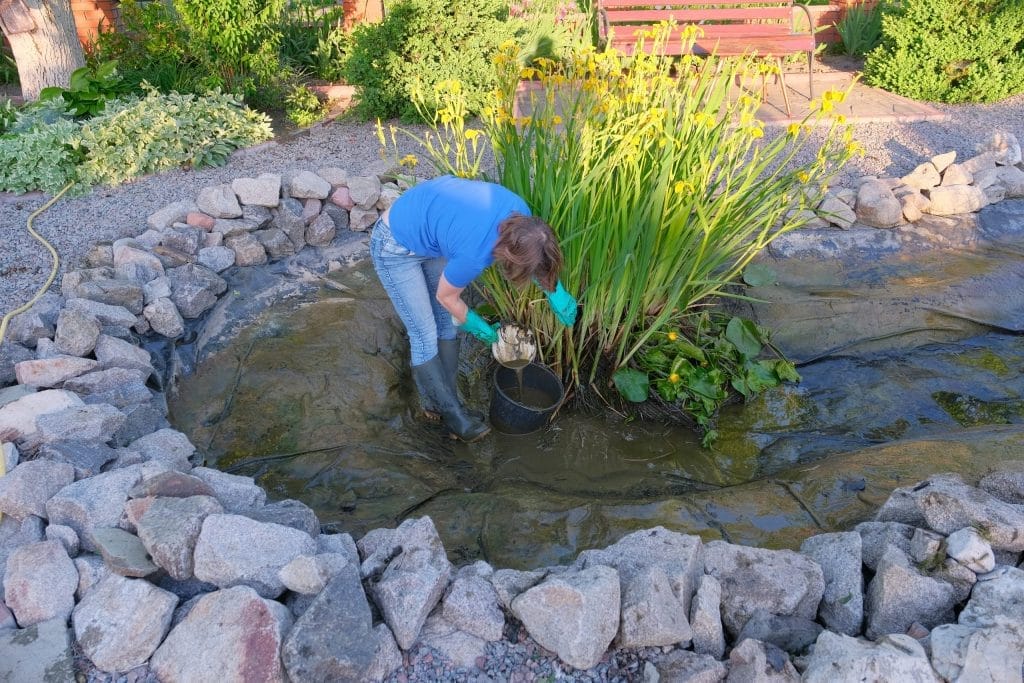

Pond Cleaning & Maintenance Service Milton Keynes
If your pond is looking a little murky, our team of experts can help. Our service area includes Central Milton Keynes, a significant district known for its architectural and planning innovations.
Why pond maintenance is essential
Whether you have a corporate pond, school pond, garden pond or any size, all of them require maintenance every 5-10 years based on their size. In deeper ponds, maintaining oxygen levels can be particularly challenging due to limited oxygen diffusion, making circulation methods like pumps essential. Due to the different types of weather Britain has, dirt, debris, algae, and a foul smelling toxic odour can accumulate quickly. This can easily strain your filter, harm your ornamental features and decrease the lifespan of any marine life you have in your pond.
Soon enough, your aquatic oasis can turn into a hazardous environment for your fish, depriving them of light and oxygen. Don’t let these issues disbalance your pond’s ecosystem. With our comprehensive pond cleaning services, premium grade pond cleaning equipment and extensive experience, we ensure your pond’s longevity will flourish with Anthony and his team.
Pond Water Quality
Pond water quality is a critical aspect of pond maintenance. The quality of the water can affect the health and well-being of the aquatic life within the pond, as well as the overall aesthetic appeal of the pond. Clear, clean water not only looks better but also supports a healthier ecosystem. Ensuring good water quality involves regular monitoring and maintenance to keep the pond in optimal condition.
Factors Affecting Pond Water Quality
Several factors can affect pond water quality, including the presence of algae, bacteria, and debris. Algae growth can be triggered by an excess of nutrients in the water, such as nitrogen and phosphorus, which can come from sources such as fish waste, decaying plant matter, and runoff from the surrounding garden. Bacteria can also affect pond water quality, particularly if the pond is not properly aerated or if there is an excess of organic matter present. Debris, such as leaves and twigs, can also compromise pond water quality by providing a food source for bacteria and algae. Regularly removing debris and managing nutrient levels are key to maintaining clear and healthy pond water.

Pond Plants and Maintenance
Pond plants play a crucial role in maintaining a healthy and balanced pond ecosystem. They provide shade, shelter, and food for aquatic life, and help to maintain good water quality by absorbing excess nutrients and producing oxygen. Incorporating a variety of pond plants can enhance the beauty of the pond while contributing to its overall health.
The Role of Pond Plants in Pond Maintenance
Pond plants can help to maintain good pond water quality by absorbing excess nutrients, such as nitrogen and phosphorus, which can trigger algae growth. They can also provide shade, which can help to reduce algae growth by blocking sunlight. Additionally, pond plants can help to maintain good water circulation and aeration, which can help to prevent the buildup of bacteria and debris. By incorporating a variety of pond plants into the pond, owners can create a balanced and thriving ecosystem that requires minimal maintenance. Regularly inspecting and maintaining pond plants ensures they continue to contribute positively to the pond’s health and appearance.
Pond cleaning and maintenance in Milton Keynes
Bring back the beauty of your pond and elevate its internal environment, with our thorough pond cleaning services. Milton Keynes, located approximately 50 miles north-west of London, is easily accessible and regionally significant.
Our pond cleaning process
Pond maintenance and cleaning is not a one size fits all process. Ultimately it depends on the size of your pond, structure, inhabitants and location. After an initial inspection, we’ll work with you to provide a customised cleaning process that preserves the health of your pond for as long as possible.
We also offer pond hoovering cleaning services and cater to private and business pond maintenance contracts. With cutting edge pond cleaning equipment, we strive to provide you with a total restoration, often within 24-72 hours.
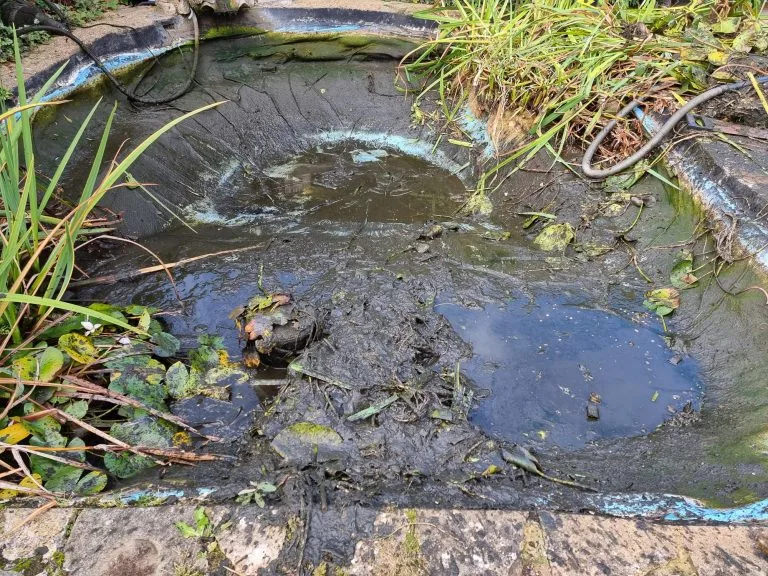


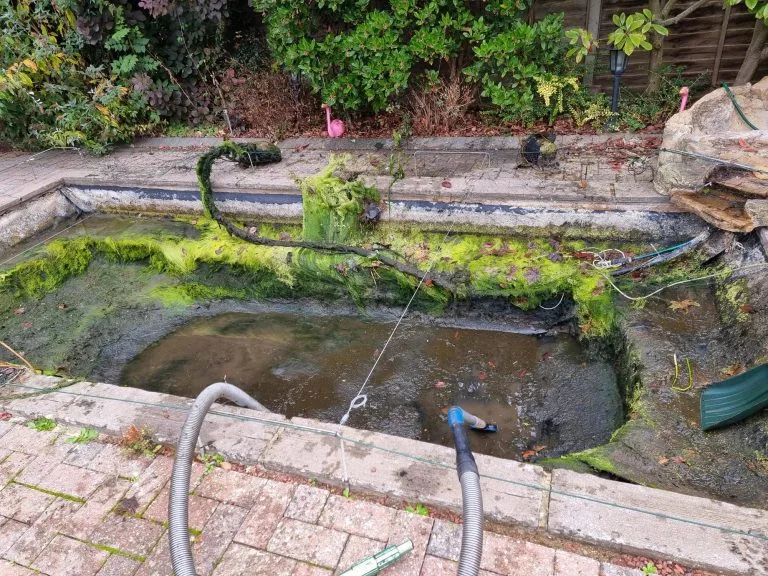

Steps to securing a healthy pond
Generally, our comprehensive clean consists of:
- Draining the pond/water feature fully
- Placing all fish/wildlife into an aerated holding tank
- Cleaning the pond liner using a power washer
- Removing all debris/sludge from the pond by vacuuming out
- Removing excess vegetation if required
- Cleaning the pond filter
- Cleaning the pond pump
- Changing the UV bulb (If needed and requested)
- Cleaning the quartz sleeve (If needed and requested)
- Carrying out any repairs if needed
- Refilling the pond with water from the pond and topped up with tap water.
- Treatments added-dechlorinator and bacteria to start the filter.
- Restarting the system as a back up
- Reinstalling the Fish & Wildlife
Receive a first class clean from us
When it comes to pond cleaning and maintenance, we’re known for our attention to detail. While every pond is unique, we always strive to provide competitive prices that are comfortable for our customers.

Essential Guide to Effective Pond Cleaning for Crystal Clear Water
Understanding Pond Maintenance
How Much Maintenance is Required?
Preparing for Pond Cleaning
Removing Fish and Pond Accessories
Cleaning the Pond
Power Washing the Rocks
Cleaning the Filters and Skimmer
Maintaining Pond Equipment
Verifying Pond Filter and Skimmers are Clean and Working Correctly
Refilling and Restarting the Pond
Adding Water Treatments
Ongoing Pond Maintenance
Inspecting the Pond Liner
Garden Pond Care
Managing Fish Population
Additional Tips
Clarifying Pond Water with Barley
Conclusion
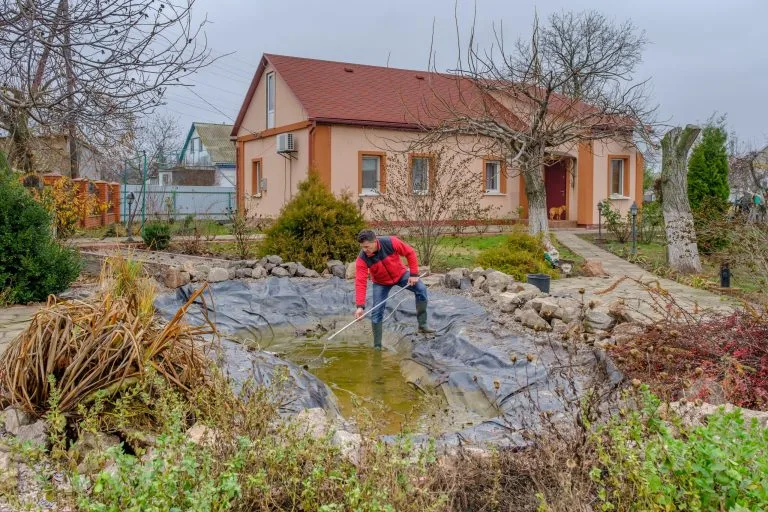



Frequently Asked Questions
MY POND IS OVERGROWN.
MY POND IS LEAKING – WHAT CAN I DO?
WHY IS MY POND WATER GREEN?
Do I need to have my pumps running all the time?
Why Choose Us
Experience With years of experience in pond maintenance and cleaning, our team has the expertise to handle ponds of all sizes and complexities. We are dedicated to delivering high-quality services tailored to meet the unique needs of each customer.
Professionalism Our team consists of trained professionals who are passionate about pond care. We take pride in our work and strive to exceed our customers’ expectations with every service we provide.
Customised Solutions We understand that every pond is different, and we tailor our services to suit the specific requirements of each customer. Whether you have a small backyard pond or a larger water feature, we have the knowledge and resources to keep it in pristine condition.
Environmentally Friendly Practices We are committed to using eco-friendly products and methods in our pond cleaning services. Our goal is to promote sustainability and preserve the natural balance of your pond ecosystem.
Customer Satisfaction Your satisfaction is our top priority. We work closely with our customers to ensure that their pond maintenance needs are met with professionalism and care. We take the time to listen to your concerns and provide personalised recommendations to help you achieve the pond of your dreams.
Ready to schedule a pond cleaning service with us?
Contact Aqua Pond today to learn more about our services and to book an appointment.
Let us help you create a clean, healthy, and vibrant pond that you can enjoy for years. Thank you for considering Aqua Pond for your pond maintenance needs.
What our Customers Say...
